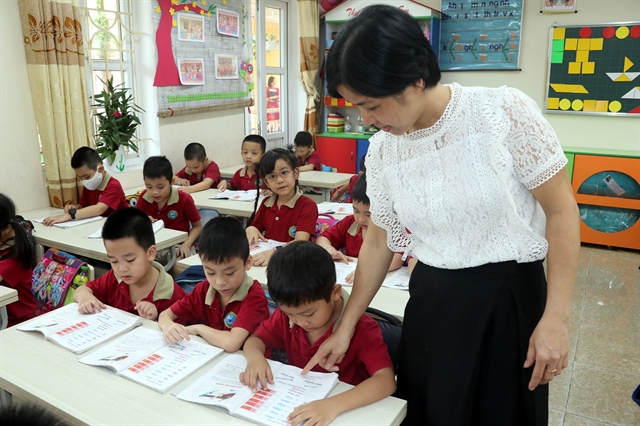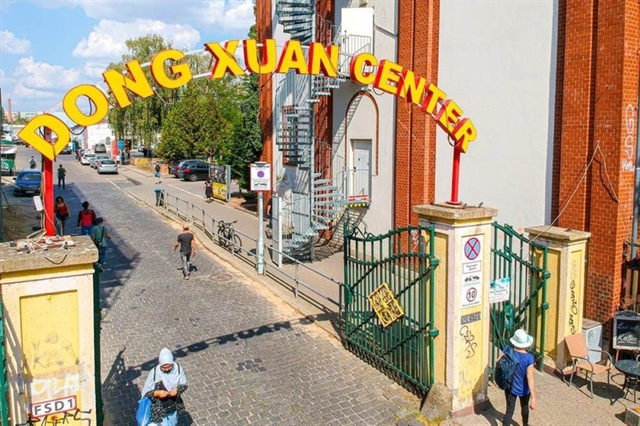 Society
Society


|
| A class at Chu Văn An Primary School in the northern province of Nam Định. — VNA/VNS Photo |
HÀ NỘI — Vietnamese 5th graders achieved the highest rank in terms of learning outcome assessment in the Southeast Asia Primary Learning Metrics (SEA-PLM) for the 2018-2021 period, according to the Ministry of Education and Training.
The SEA-PLM is a regional programme to assess learning outcomes of Grade 5 students to inform policy-making and ensure all children achieve meaningful learning outcomes.
About 30,000 students from six countries of Cambodia, Laos, Malaysia, the Philippines and Việt Nam participated in the first assessment round of SEA-PLM which was implemented in 2019.
This first round focused on the 5th grade students and on three learning domains of reading, writing and mathematics.
In the subject of mathematics, the average score of Vietnamese students was 341.55 points while the average score of students of the six countries was 304.79 points.
In reading, the Vietnamese students got an average score of 336.46 points compared to the average score of the six countries’ students of 300 points.
And in the field of writing, the average score of Vietnamese students was 328.01 points while the average score of students of the six countries was 304.92 points.
Although achieving high scores compared to other countries, the results showed that learning outcomes of the students in remote areas were still behind those in other areas of Việt Nam.
Female students' academic performance in mathematics was similar to that of male students, but in reading and writing, female students achieved higher results than male students.
The students from high and medium-income families achieved higher scores and proficiency levels compared to those from low-income families.
The higher the parent's education level, the better the children's academic performance.
In addition, the occupation of parents and the study conditions at home also had a great influence on the learning outcomes of students.
SEA-PLM aims at improving the quality of education through systematic monitoring of student learning outcomes and assisting the Southeast Asian Ministers of Education Organization (SEAMEO) member countries to better measure and understand student achievements as a whole and for individual groups by applying culturally appropriate metrics to learning outcomes in domains of reading, writing, mathematics and global citizenship.
According to the Ministry of Education and Training (MoET), along with participating in SEA-PLM as a common goal of Association of Southeast Asian Nations (ASEAN), Việt Nam aimed for some specific goals such as integrating with other countries in the region in education; measuring the educational level of Việt Nam compared to other countries in the region; analysing the current state of education and recommending changes in education policy to improve the quality of education in Việt Nam.
Besides, through the SEA-PLM, Việt Nam demonstrated its responsibility for the construction and development of the common home of Southeast Asian countries.
SEA-PLM's assessment also served Việt Nam’s general education innovation.
From the assessment of the 2018-2021 period, departments of education and training said that the ministry needed to standardise the preparation process for national and international assessment programmes which includes detailed guidance and will be periodically and regularly implemented.
In particular, it was necessary to strengthen the learning assessments for management staff, teachers and parents.
To prepare for the SEA-PLM assessment round of 2021-2024, Deputy Minister Nguyễn Hữu Độ asked education and training departments and schools to pay more attention to standardising the assessment process and inform beneficiaries to understand the evaluation process in the best way.
“We were building an open, real and hands-on education sector with a drive towards good teaching, learning and management,” Độ said.
“Therefore, the positive results compared to education in other countries in the region and in the world would not only be a source of pride for the education sector but also for the whole country,” the deputy minister said. — VNS




